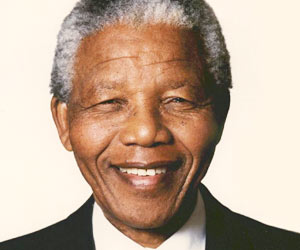Generalities
I would like to expose to you , in the light of our work on the Schema Therapies and the Enneagram and through many examples this so particular type.
First at all let’s give some definition of what is a type, in opposite of the other aspect of our individual configuration , that is the famous “Subtype”, which is, as I usually say, a very bad term, indeed.
Jeffrey Young an American psychologist works on a new therapy that deals with Early Maladaptive Schemas (Schema Therapy). Early Maladaptive Schemas are self-defeating emotional and cognitive patterns that begin early in our development and repeat throughout life. According to this definition, an individual’s behaviour is not part of the schema itself; Young theorizes that “maladaptive behaviours develop as responses to a schema”. Thus behaviours are driven by schemas but are not part of schemas.
According to our model, internal schemas lie at the core of personality disorders and the behavioural patterns in DSM-IV are primarily responses to the core schemas. For most DSM-IV categories, the coping behaviours are the personality disorders. Many diagnostic criteria are lists of coping responses”.
In our fifteen years of clinical observations on more than 2000 subjects, we clearly saw that the personality disorders of the DSM IV, as behavioural pattern, is connected to the subtypes rather than the types that are linked to the cognitive and emotional core schemas.
For example, type 6 is the schema of vulnerability. If the subtype is more introverted, the individual will surrender to his schema (phobic 6), and if he is more extroverted he will counter attack his schema (counter phobic 6). The type 7 is the schema of self-sacrifice. If the subtype is introverted, he will surrender to the schema (sacrifice) and if he is extroverted he will counter attack it (counter sacrifice or epicurean). It’s exactly the same with the nine types as we already stated earlier (#EM 206). Note that we have adapted Jeffrey Young schema therapy to our new enneagram model, and our results show slight differences.
Type 9 and the Subjugation Schema
According to Jeffrey Young (J. Young. Schema Therapies ) some characteristics of the Subjugation Schema are :
Excessive surrendering of control to others because one feels coerced—submitting in
order to avoid anger, retaliation, or abandonment. The two major forms of subjugation
are:
A. Subjugation of needs: Suppression of one’s preferences, decisions, and desires.
B. Subjugation of emotions: Suppression of emotions, especially anger.
Usually involves the perception that one’s own desires, opinions, and feelings are
not valid or important to others. Frequently presents as excessive compliance, combined
with hypersensitivity to feeling trapped. Generally leads to a build up of anger, manifested
in maladaptive symptoms (e.g., passive–aggressive behaviour, uncontrolled outbursts of
temper, psychosomatic symptoms, withdrawal of affection, “acting out,” substance
abuse).
In our work with the Schema Therapies and Enneagram this Subjugation schema is related to the type 9.
As we already mentioned, if we are an Extraverted type we tend to overcompensate the schema, in the case of an Introverted type we will submit to the schema.
The type 9 Counter Subjugation :
As a result we can have very assertive or domineering 9s (counter subjugation ), in opposition to the 9s Yin (introverted ) that is more related to the common description of the 9 (passivity, avoidance, narcotization, suppressed anger and so on… )
The classical bias is also to associate Introverted people with the type 5, or 6 (except the counter phobic ) or 4 or 9 and Extroverted people with some 8 or 1 or 7…
Most of the time the type 9 Yang or Extrovert tend to be associated with 8 or 1 (Mandala, Malala Yousafzai, Charles de Gaulle, Helmut Kohl, Hitchcock, etc… )
We will see also that the Subtype Space is very similar to the type 9 and very often people who belong to this Family type themselves in this type. See the example of Gandhi who is classically type in the 9, but is , according to our work a Head Center, type 7 Yin and Space Family (the type 9 is only a cofixation ). And there are so many !!( French President Hollande, JP SArtre, etc… )
Some characteristics of this Space family (see more details in the next article in Enneagram Monthtly ) :
Positive aspects:
Awakening, Space, Emptiness and fullness, Timelessness and impermanence, Silence, Immobility, Infinity, Present moment, Presence, Spirituality, Contemplative and meditative, Calm, Simplicity, Humility, “Normality”, Peace as vital importance, Unprejudiced conscience, Impartiality, Spacious mind, inclusive and reassuring.
Negative aspects:
Disconnection, lack of earth and grounding, Disembodiment, Disintegration, Fear of the unknown and of the other, Closed mind, lack of communication, Solitude, Shyness, Do not like to put themselves forward, Escape from reality, avoidance, denial, ignorance, inertia, Escape the conflict and the confrontation, Numbness, Catatonia, Narcotization and Anesthesia of the senses and the mind, Made the deaf and the blind, Sloth and indolence,” I don’t care” attitude, Need for security and routine to overcome anxiety, Schizoid tendency.
Leave a Reply
You must be logged in to post a comment.





One Response to The type 9 in the Enneagram